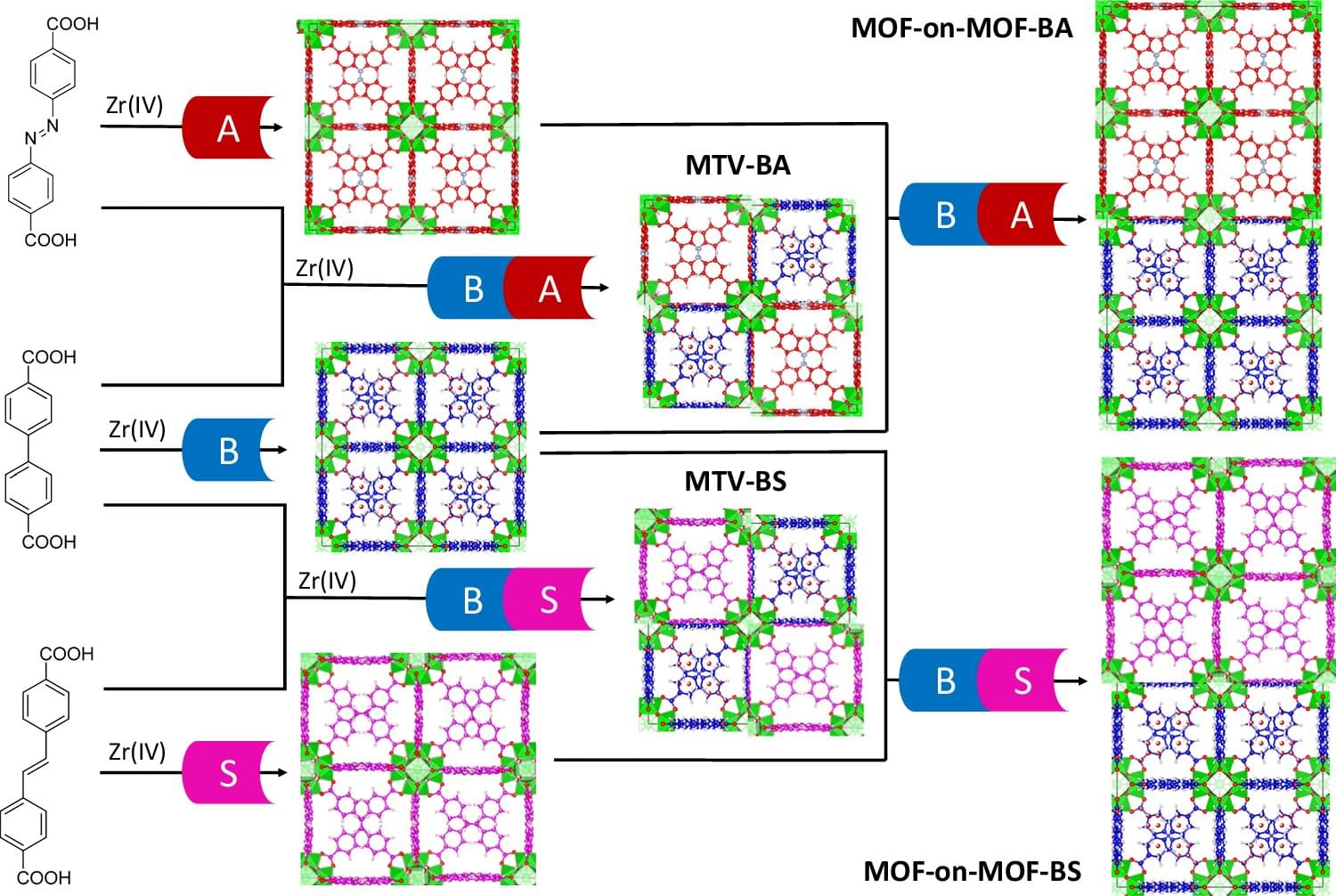Scientists at Oregon State University have taken a big step toward lighting and display technologies that are more energy efficient and better for the planet. The work centers around crystalline, porous materials known as metal organic frameworks, often abbreviated as MOFs, and points toward next-generation materials that may end reliance on rare earth metals.
The study by Kyriakos Stylianou, associate professor of chemistry in the OSU College of Science, and graduate students Kyle Smith and Ankit Yadav appears in Nature Communications.
The findings are important because displays—ubiquitous in communications, computing, medical monitoring and many other aspects of everyday life—and lighting contribute heavily to global energy consumption and greenhouse gas emissions. The rare earth metals that underpin those technologies—europium, terbium, yttrium, cerium, gadolinium and others—are expensive and environmentally hazardous to mine and process.
